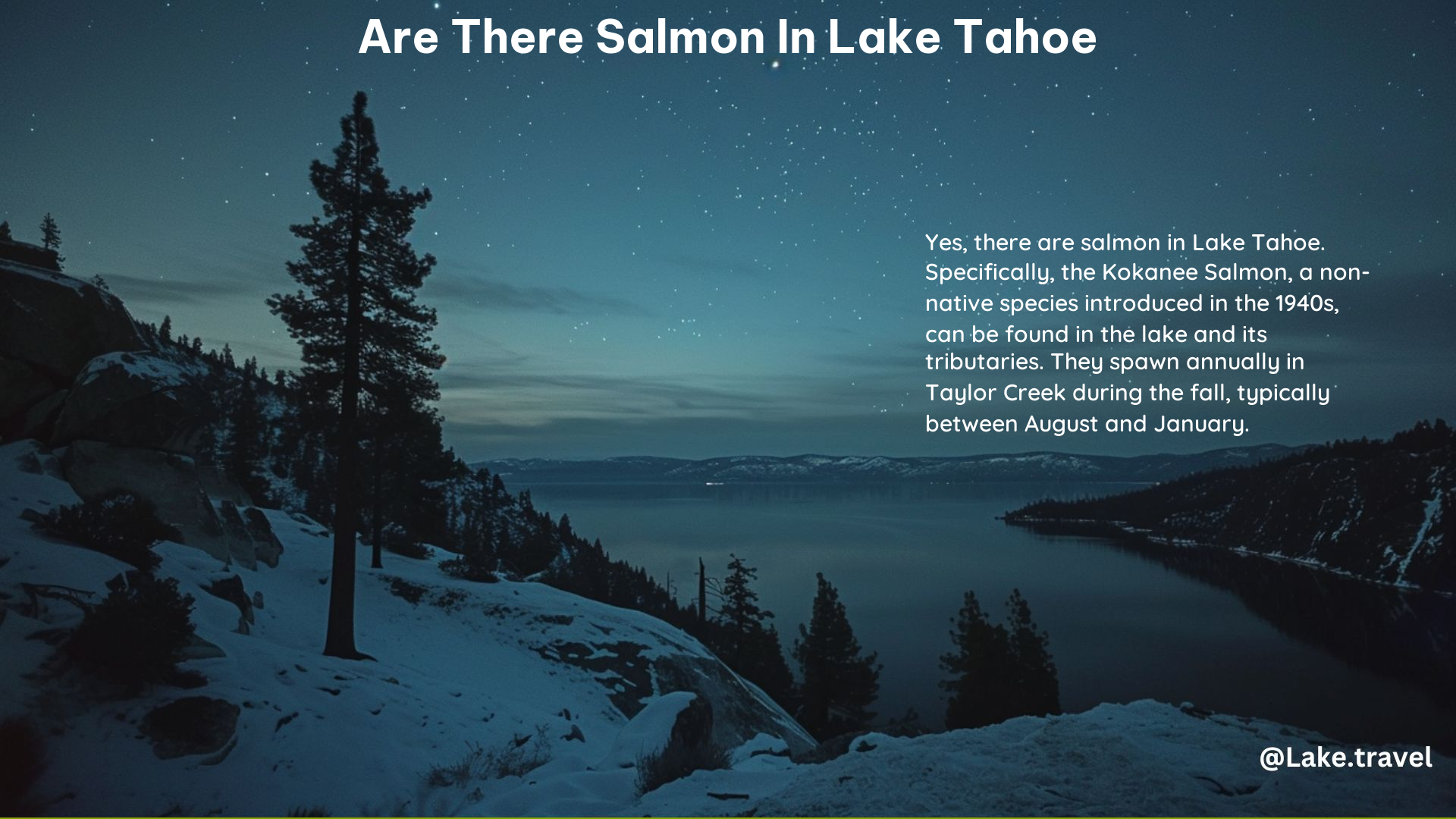Yes, there are salmon in Lake Tahoe. Specifically, the Kokanee Salmon, a landlocked version of the Sockeye Salmon, can be found in Lake Tahoe and its tributaries. They were introduced to the lake in the 1940s and have adapted well to the environment.
The Kokanee Salmon in Lake Tahoe
The Kokanee Salmon is a unique species that has adapted to the freshwater environment of Lake Tahoe. Unlike their anadromous (ocean-going) counterparts, Kokanee Salmon spend their entire life cycle in the lake and its tributaries. They are a smaller, more compact version of the Sockeye Salmon, typically reaching a length of 12-16 inches and weighing around 1-2 pounds.
Habitat and Spawning
Kokanee Salmon in Lake Tahoe primarily inhabit the deeper, cooler waters of the lake, where they feed on plankton and small crustaceans. During the spawning season, which typically runs from late summer to early fall, the Kokanee Salmon migrate up the lake’s tributaries to spawn. They prefer gravel-bottomed streams with cool, well-oxygenated water.
Spawning Behavior
The spawning process for Kokanee Salmon in Lake Tahoe is a fascinating sight to behold. The males develop a distinctive hump on their back and a hooked jaw, which they use to compete for the attention of females. The females, in turn, dig shallow nests called redds in the gravel, where they deposit their eggs. The males then fertilize the eggs, and the female covers them with gravel to protect them.
Life Cycle
After spawning, the adult Kokanee Salmon die, completing their life cycle. The eggs hatch in the spring, and the young salmon, called fry, remain in the tributaries for several months, feeding on small insects and crustaceans. Once they reach a certain size, the fry migrate back into the lake, where they continue to grow and mature.
Importance of Kokanee Salmon in Lake Tahoe

The Kokanee Salmon plays a vital role in the ecosystem of Lake Tahoe. They are an important food source for a variety of predators, including bald eagles, ospreys, and lake trout. Additionally, the salmon’s spawning runs provide a valuable nutrient input to the tributaries, supporting the growth of aquatic plants and invertebrates.
Recreational Fishing
Kokanee Salmon are also a popular target for recreational anglers in Lake Tahoe. The lake’s clear waters and the salmon’s unique spawning behavior make for an exciting and challenging fishing experience. Many local and visiting anglers enjoy the thrill of catching these landlocked salmon, which are known for their strong fighting ability and delicious flavor.
Conservation Efforts
Due to the importance of the Kokanee Salmon to the Lake Tahoe ecosystem, there are ongoing conservation efforts to protect and maintain the population. The California Department of Fish and Wildlife and the Nevada Department of Wildlife closely monitor the salmon’s numbers and work to ensure that their spawning habitats are protected and maintained.
Threats to Kokanee Salmon in Lake Tahoe
Despite their adaptability, the Kokanee Salmon in Lake Tahoe face several threats that could impact their long-term survival.
Invasive Species
One of the primary threats to the Kokanee Salmon is the presence of invasive species, such as the Smallmouth Bass and the Quagga Mussel. These non-native species can compete with the Kokanee for resources, prey on their eggs and fry, and disrupt the delicate balance of the lake’s ecosystem.
Climate Change
Climate change is also a concern for the Kokanee Salmon in Lake Tahoe. Warmer water temperatures and changes in precipitation patterns could affect the salmon’s spawning behavior and the availability of suitable spawning habitat.
Pollution and Sedimentation
Pollution and sedimentation from human activities, such as development, recreation, and transportation, can also impact the Kokanee Salmon. Increased sedimentation can smother the gravel beds where the salmon spawn, while pollution can degrade water quality and harm the salmon’s food sources.
Conclusion
The presence of Kokanee Salmon in Lake Tahoe is a testament to the lake’s unique and diverse ecosystem. These landlocked salmon have adapted to the freshwater environment and play a vital role in the lake’s food web and recreational activities. However, their long-term survival is dependent on ongoing conservation efforts and the mitigation of threats such as invasive species, climate change, and pollution. By understanding and appreciating the importance of the Kokanee Salmon, we can work to ensure that this iconic species continues to thrive in the stunning waters of Lake Tahoe.
Reference:
– Kokanee Salmon in Lake Tahoe
– Invasive Species in Lake Tahoe
– Climate Change Impacts on Lake Tahoe
